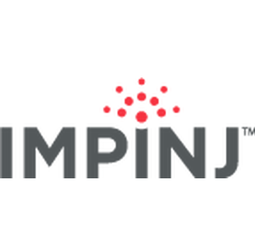
技术
- 网络与连接 - 射频识别
- 传感器 - RFID阅读器
- 可穿戴设备 - 补丁标签
适用行业
- 航天
适用功能
- 商业运营
客户
澳洲航空
关于客户
挑战
Qantas 使用 RFID 标签来改善客户服务并加快办理登机手续。
解决方案
Qantas 使用 Tagsys 的技术部署了可重复使用的行李 RFID 标签,以帮助下一代机场办理登机手续。在部署的第一阶段,大约 100,000 名澳航白金、金、银和铜牌常旅客获得了带有内置 RFID 标签的会员卡。客户使用会员卡检查自己和行李,也可以将卡用作登机牌。客户还获得了名为“Q Bag Tag”的 RFID 行李标签,永久贴在他们的行李上。这些由 RFID 解决方案提供商 Tagsys 设计的奖章式标签采用 Impinj Monza 4 标签芯片,封装在定制的塑料外壳中,让客户无需排长队,在自助登记站快速放下行李。这些标签还具有小尺寸和非常高的电子读写性能,适用于所有标签方向。
收集的数据
Identity, Process Procedure, RFID , Security and access
运营影响

Case Study missing?
Start adding your own!
Register with your work email and create a new case study profile for your business.
相关案例.

Case Study
Airbus Soars with Wearable Technology
Building an Airbus aircraft involves complex manufacturing processes consisting of thousands of moving parts. Speed and accuracy are critical to business and competitive advantage. Improvements in both would have high impact on Airbus’ bottom line. Airbus wanted to help operators reduce the complexity of assembling cabin seats and decrease the time required to complete this task.

Case Study
Aircraft Predictive Maintenance and Workflow Optimization
First, aircraft manufacturer have trouble monitoring the health of aircraft systems with health prognostics and deliver predictive maintenance insights. Second, aircraft manufacturer wants a solution that can provide an in-context advisory and align job assignments to match technician experience and expertise.

Case Study
Aerospace & Defense Case Study Airbus
For the development of its new wide-body aircraft, Airbus needed to ensure quality and consistency across all internal and external stakeholders. Airbus had many challenges including a very aggressive development schedule and the need to ramp up production quickly to satisfy their delivery commitments. The lack of communication extended design time and introduced errors that drove up costs.

Case Study
Accelerate Production for Spirit AeroSystems
The manufacture and assembly of massive fuselage assemblies and other large structures generates a river of data. In fact, the bill of materials for a single fuselage alone can be millions of rows of data. In-house production processes and testing, as well as other manufacturers and customers created data flows that overwhelmed previous processes and information systems. Spirit’s customer base had grown substantially since their 2005 divestiture from Boeing, resulting in a $41 billion backlog of orders to fill. To address this backlog, meet increased customer demands and minimize additional capital investment, the company needed a way to improve throughput in the existing operational footprint. Spirit had a requirement from customers to increase fuselage production by 30%. To accomplish this goal, Spirit needed real-time information on its value chain and workflow. However, the two terabytes of data being pulled from their SAP ECC was unmanageable and overloaded their business warehouse. It had become time-consuming and difficult to pull aggregate data, disaggregate it for the needed information and then reassemble to create a report. During the 6-8 hours it took to build a report, another work shift (they run three per day) would have already taken place, thus the report content was out-of-date before it was ever delivered. As a result, supervisors often had to rely on manual efforts to provide charts, reports and analysis.

Case Study
Developing Smart Tools for the Airbus Factory
Manufacturing and assembly of aircraft, which involves tens of thousands of steps that must be followed by the operators, and a single mistake in the process could cost hundreds of thousands of dollars to fix, makes the room for error very small.








